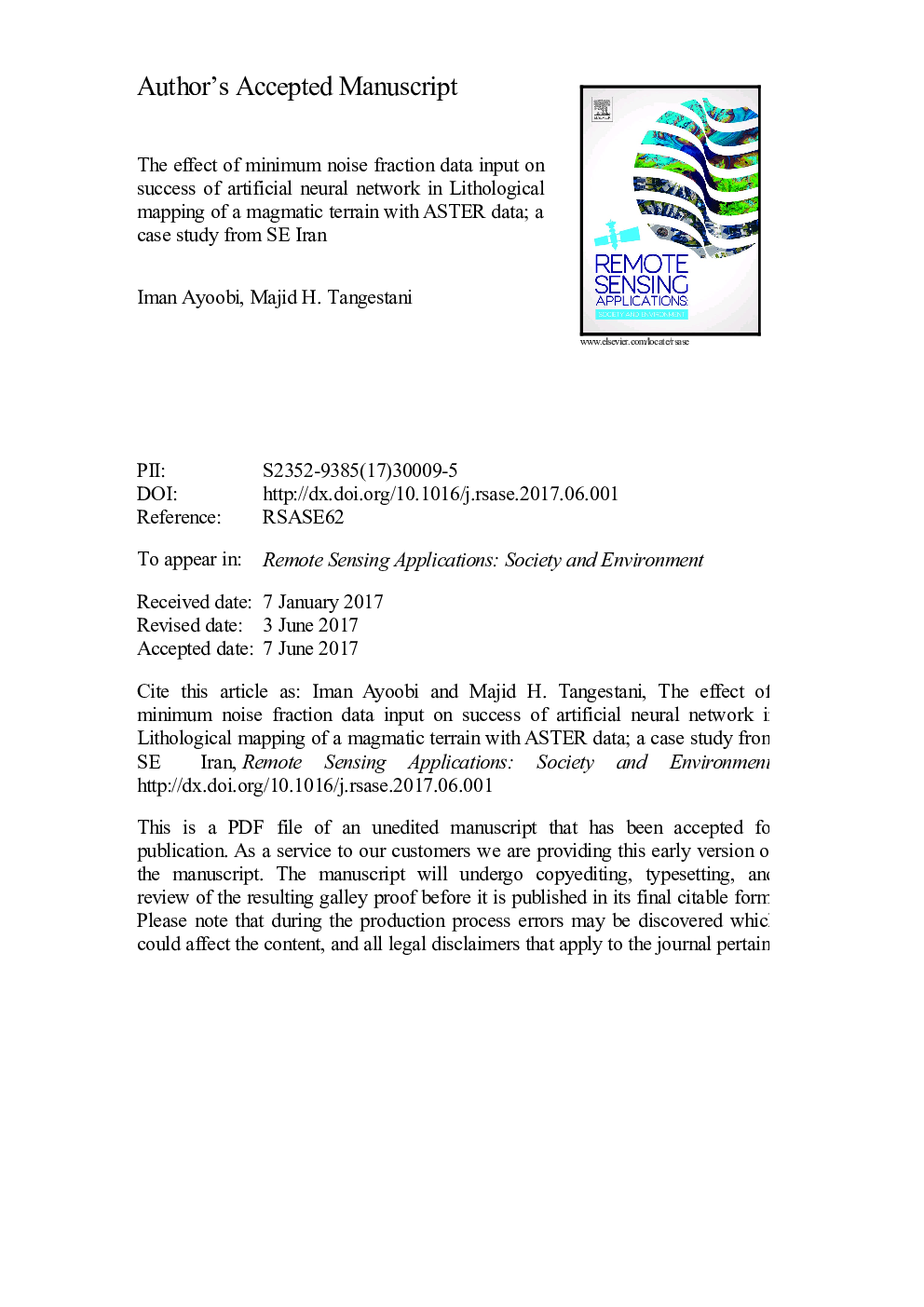| کد مقاله | کد نشریه | سال انتشار | مقاله انگلیسی | نسخه تمام متن |
|---|---|---|---|---|
| 5754623 | 1621000 | 2017 | 18 صفحه PDF | دانلود رایگان |
عنوان انگلیسی مقاله ISI
The effect of minimum noise fraction data input on success of artificial neural network in lithological mapping of a magmatic terrain with ASTER data; A case study from SE Iran
دانلود مقاله + سفارش ترجمه
دانلود مقاله ISI انگلیسی
رایگان برای ایرانیان
موضوعات مرتبط
مهندسی و علوم پایه
علوم زمین و سیارات
کامپیوتر در علوم زمین
پیش نمایش صفحه اول مقاله

چکیده انگلیسی
This study is an effort applying visible-near infrared and short wave infrared datasets of Advanced Spaceborne Thermal Emission and Reflection Radiometer (ASTER) to map lithological units of a magmatic terrain in Kerman, Iran, using feed forward back propagation neural networks. It investigates the role of different input data in success of a network model in lithological mapping. Aiming this, two different approaches were followed. For the first approach, data were atmospherically corrected and for the second approach minimum noise fraction (MNF) transformation was applied on atmospherically corrected data. Both of these data inputs were introduced to different experiments of the network uses different parameters; the controlling parameters such as activation function and numbers of neurons were changed and the total accuracies were calculated using confusion matrices and kappa coefficient. It was revealed that MNF transformation generally increases the quality of data inputs and provides more promising results than only atmospherically corrected data.
ناشر
Database: Elsevier - ScienceDirect (ساینس دایرکت)
Journal: Remote Sensing Applications: Society and Environment - Volume 7, August 2017, Pages 21-26
Journal: Remote Sensing Applications: Society and Environment - Volume 7, August 2017, Pages 21-26
نویسندگان
Iman Ayoobi, Majid H. Tangestani,